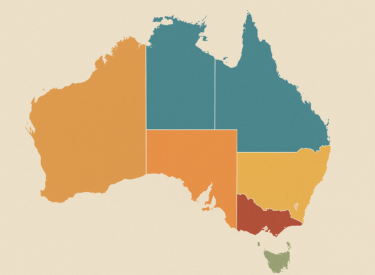As expected, the RBA is taking a cautious approach, holding the cash rate firm at 4.1% in April, despite inflationary pressures easing into the target range and labour markets showing a softer outcome in February.
The monthly CPI update for February shows core inflation has been tracking inside the RBA’s 2-3% target since December.
At the same time, jobs growth suffered the largest month-on-month fall since December 2023, taking the annual jobs growth back to 1.9% - the lowest annual change since October 2021.
With inflation looking like it has been tamed and some early signs of a loosening in labour force indicators, two of the RBA’s pain points have seen some relief.
However, the RBA is still wary about low productivity domestically as well as the uncertain outlook amid global trade and geopolitical tensions.
Although rates were kept on hold today, as most expected, the February rate cut has already influenced housing markets, sending home values 0.3% higher in February before rising 0.4% in March.
Boost to consumer sentiment
In financial terms, the 25-basis point cut in February was relatively mild: mortgage repayments on a $500k variable rate loan reduced by around $81/month.
The bigger influence can be seen in consumer sentiment, which bounced to a three-year high in March, according to the Westpac/Melbourne Institute index.
When consumers feel more confident about the domestic economy and their household finances, they are more prepared to make high-commitment decisions such as buying or selling a home.
The correlation between sentiment and home sales is clear from the graph below; the flow-on effect from the uptick in sentiment should translate into increased selling activity.

The outlook
The outlook for interest rates remains positive, with the cash rate likely to reduce further in 2025, but only gradually.
The quarterly inflation outcome, which will be released on April 30th ahead of the RBA’s next board meeting, will be a key factor influencing the RBA’s decision in May.
If core inflation holds below the 3% mark, which seems highly probable, it is looking more likely that we will see a second cut to the cash rate.
Financial markets have two more rate cuts priced in this year and economists from the Big 4 banks are forecasting between one and three more cuts this calendar year.
Factoring in a reasonably bullish 75 basis point cut to the cash rate for the remainder of the year (3.35% by year’s end) implies that monetary policy settings will remain above the RBA’s estimate of the neutral cash rate (of around 2.9%) throughout 2025.
Until home loan serviceability improves more substantially, it’s hard to see housing markets moving into a more material growth trend with other downside factors, including stretched affordability, reduced population growth and the current risk-averse lending environment, likely to limit the potential for a material lift in home values.














